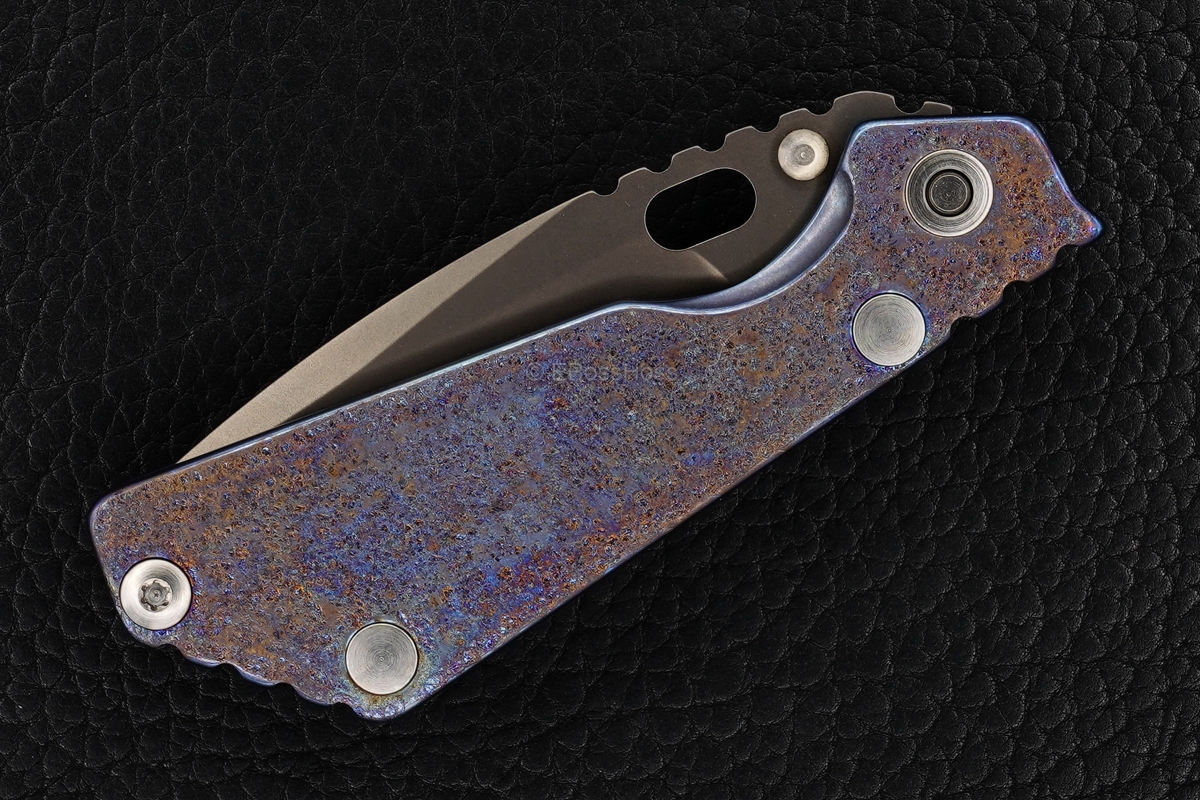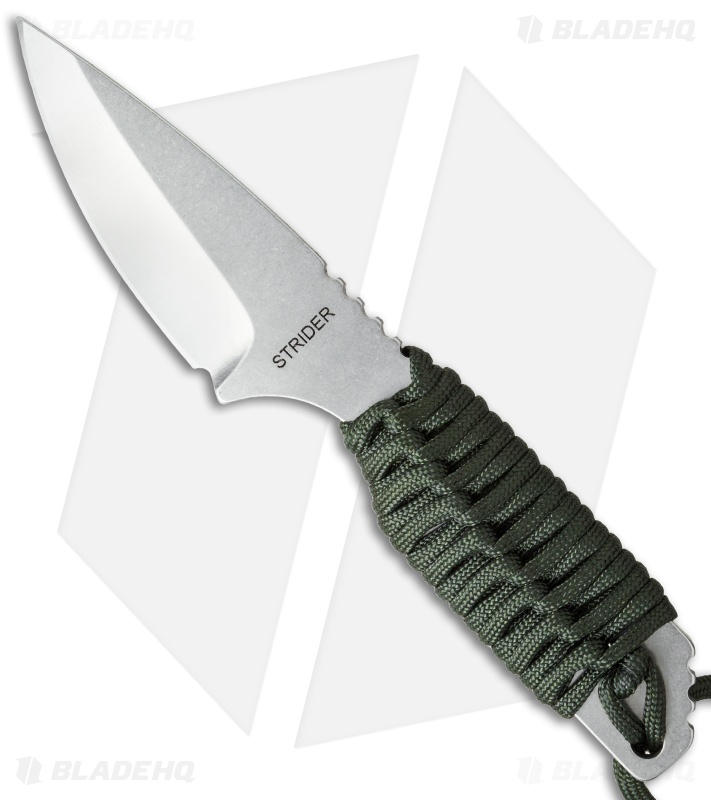

The blade stops, which look like thumb studs, are positioned in a way when the knife is closed that they’re not usable for deploying the blade. The deployment of the SnG is by the way of a oval opening hole. It’s also ground thinner at the heel of the blade than it is at the tip just another point for a well thought out design. Even though it’s cutting edge is relatively short for the overall size of the knife, it’s a worthy sacrifice for having this blade. It’s ground for cutting performance and, simultaneously, for piercing and prying. It’s confidence inspiring, tough (even in the alternative commonly used steels, such as CPM-20CV and PSF-27), looks great, and has my personal favorite deployment method. I must admit, this is one of my favorite blades I’ve ever used. Just beyond the jimping is the top swedge cut into the blade, to maximize piercing ability, while retaining a thickly ground tip for toughness and potential prying. The spine of the blade has 4 pronounced jimping notches for traction when in a saber grip. With a large, oval cutout in the blade for deployment, this knife can be opened in multiple ways, whether you prefer to flick open your folders, or slowly roll them open. The blade also features what appear to be thumb studs, but are actually blade stops for keeping the blade open in place of a traditional stop pin. We’ll discuss that particular design aspect of the knife later in the field test, but there’s no denying the lack of proportion between the size of the knife and the cutting edge length. Then, finally, the edge of the blade begins, all for a disproportionate 2.75” of sharpened blade length.įor an 8” overall knife, that’s a very short amount of usable blade.

Above the finger choil, is a sharpening choil. The base of the blade has a large forward choil, for the index finger to comfortably sit within. And with 3V steel, there’s really nothing this blade can’t handle. Our test unit, utilizing the high flat grind with a swedge in the spine of the blade, and matte black oxide coated finish, looks absolutely sinister. Their blades are commonly offered in drop point and tanto variants. The SnG comes in “drops”, meaning the shop will make a batch of knives in a particular configuration, sell that batch off, and start on a different configuration. But, even with very thick blade stock, this knife is ground thinly enough at the edge, that most cutting and moderate slicing tasks are still enjoyable with great performance. The thicker blade on this model carries over to the other fatty models, but the standard SnG thickness is 0.16”. This blade is ground very thin near the edge, but retains a stock thickness of 0.19” in this “fatty” variant. It’s a Monkey Edge exclusive variant, but the blade grind is the same as all the standard production model SnG’s. Today’s example of the SnG is a traditional drop point, made from CPM 3V steel. Strider”, comes in a few common blade shapes, and many one-offs and customs. The most current generation, with the blade stamped “M. The SnG has had many generations come and go.


 0 kommentar(er)
0 kommentar(er)
